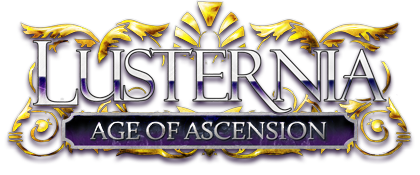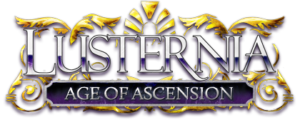Peering into the Light (pt2)
More than two months ago now I made a post, ‘Peering into the Light (pt1)’, and at its conclusion promised to talk a bit more on other aspects of Celest. After a few months of contemplation (and listening in on the Cantors a fair bit), I’ve decided to revisit the topic and pick up where I left off – approaching the topics of the Guilds of New Celest. I offer my usual warning regarding my verbosity – however tonight I suspect I will err on the side of brevity. (Rejoice, Estarra – Gaudiguch has frozen over!)
I wish to preface this with the acknowledgment that this is simply how I view them – and while that certainly carries a lot of weight, I hope it is the weight of experience and knowledge, and not the weight of raw authority. As well, I feel the need to note that I will discuss two aspects on each guild – its past incarnations, and its current ones. Take it as you will – they do not always align perfectly, however the thematic core of the guild is likely entirely unchanged.
I shall dive into it, then:
- The Aquamancers
- The Aquamancers are perhaps the oldest of the Celestian guilds – early in the life of Celest, before the discovery of Celestia and the founding of the Holy Empire, there was a city upon a beautiful island at the heart of a wondrous sea and its waters shone like crystal. It was home to much life and beauty, and the merian people who congregated there were extremely rich culturally, and were the progeny of a people who had great skill in higher forms of magick. As the communes delved into the Ethereal Planes, Celest delved beyond them – discovering first the Plane of Water, from which they draw on its vibrations and learned to cleanse the rivers, seas and waters, bringing life back to places where it was either dying or had largely died out – This is discussed in the Aftermath of the Taint Wars, albeit only briefly.
As the Aquamancers came to master the waters, there likely came a very practical use for them as a budding guild, in the sea-locked city – merchants. Particularly in the field of sailing ships, much of the Aquamancer naming conventions are related to a concerted naval force – and this persists today. Interestingly, though, I feel it’s important to note that, during the time of the Empire, they were not “The Aquamancers”, but “The College of Aquamancy”.
It’s important to remember, when discussing the Aquamancers, that they are not ‘outside’ of the Light, as has been stated in the past (for those who remember it, so long ago) but some of the guild. They are most certainly devout followers of the Light, though they are not directly drawing from Celestia.
In more modern times, Aquamancers seem to have slipped into the role of the studious scholar almost exclusively. Perhaps it is the lack of a naval aspect to Lusternia – though I’m always both tickled and pleased when I see Aquamancers going all Captain Kirk on aetherships.
- Celestines
- Out of the Aquamancers came a merian by the name of Javile Farain, and his close companion Tresalyne. Together they pursued what became almost an obsession of Tresalyne’s – the stars. “What are they, what beings dwell there?” Tresalyne had long asked and wondered – through the Plane of Water, seeking the Stars, they pierced the veil between planes. Together they stepped forth onto the Plane of Celestia, discovering the Holy Supernals.
Javile Farain went on to become the first Holy Father of the Celestines – Tresalyne would die around this time, using his own life-force to trap a raging tempest within a golden chest (later discovered by the Celestines and opened by Talkan La’Saet!). Because of his sacrifice, Elohora drew Tresalyne into her bossom, and he was reborn as the Starlit Saint, a being not-quite-mortal and not-quite-immortal, but permanently bound to Holy Celestia, and an entity of both great faith and great holy power. His body would be preserved by the Celestines for centuries to come.
It’s important to note a few things about the Celestines – firstly, they’re priests. This means they’re also scholars, theologians, preachers and even combatants. The sects of the Celestines are many-fold, with warriors who hold to Methrenton’s precepts, mediators that hold to Japhiel’s and pacifists that hold to Raziela’s. Those who follow Shakiniel often performed charitable work, largely related to children and other groups of people viewed as ‘weak’ and ‘less fortunate’. This likely plays into the sense of racial superiority of the merian people – they feel morally obligated to help the weaker, lesser races. This fervent religious belief would permeate the whole of the city and would eventually drive them to control over the entire Basin of Life.
The Celestines were home to many remarkable priests, some who followed Tresalyne into the state of being known as Sainthood. I’ll probably touch on this at a later date, after it’s been more fully fleshed out ICly. Needlessly said, they were great priests who arose during times of great trouble, and committed great acts of self-sacrifice.
- Paladins
- The Paladins were born from Celestia, their first members having received their sacred powers by drinking from the Pool of Stars. Previously I’ve referenced the history of the Paladins that Catarin has published in-game – it’s excellent, and details this a bit more, so I’ll gloss over it and expand on its function instead.
The Paladins served as the Imperial Guard for the Royal Family and the Great Houses – while the Ur’Guard were used as shock troops, the Paladin were the elite of the elite. Paladins were the only multi-racial guild in Old Celest, allowing some krokani within their ranks. This was an immense honour for those families whose sons were accepted.
In modern times, the Paladins have shifted to fill the gap left by the Ur’Guard – they are the prime fighting force of New Celest. I feel they fill this role very well ICly, and the likes of Malicia do wonderfully leading them. At this time, it’s not known if any saints rose from their numbers – and I won’t say one way or another on that topic, for the time being.
- The Cantors
- Ahh, the Cantors. Bearing the power of the Starhymn, a section of the Song of Creation once kept by Rhapsody the Melodic, they can be a difficult guild. I’ve watched them struggle with claiming some sense of identity over the years, and I think as time has gone on they’ve gotten a lot better. Though sometimes a bit too whimsical, they generally can keep themselves within the realm of reason.
This guild did not exist during the Holy Empire – no bard guild did. However, the Starhymn did, however in the form of the Voice of Rhapsody and the Miracle Flock (or the Flock of a Thousand Miracles). A great flight of white doves, it winged its way across the First World and brought blessings and good cheer, and often heralded a golden age for many civilizations. Sadly, it also would herald many of their downfalls, for Zenos would commonly give chase if he sensed them, hungry as he was for the Song. The Flock likely held some affinity towards Dionamus the Healer – I cannot say if he knew their true nature or not, but he is linked to them in many ways, including during his rise to Divinity. This is spelled out more in the Diary of Tamthys, who was his lover prior to his becoming Dionamus.
What is Starhymn? At its base, it’s the songs mimicked by the choirs of Celestia, as well as the rhythm of the tides, seas and music of the stars. Whereas the Celestines may focus on individual Supernals, viewing each as parts of the whole, the Cantors could very well take a broader view of Celestia, focusing instead of on how Methrenton is a Warrior, they focus on how the various parts come together to create the grandiose, theological masterpiece that is the Light.
That’s all I’ll say for now – I hope to find time in the future to help the Cantors further develop their culture.
- The Tahtetso
- Ahh, the Tahtetso! Perhaps one of my favourite guilds in Celest. Well, top 5. An amalgam of kepheran martial techniques and celestian theology, I think those who helped found the guild did a wonderful job giving it orientation, goal and a sense of identity. With time it’s been expanded upon, and I’ve tried to see it drawn around full-circle. For those unaware, the ideal goal of a tahtetso monk is to reach a state of ‘lumosis’, where the soul and the Light are united.
A fascinating concept, it goes well with the idea of who and (more importantly) what the Saints of Celestia are. To that end, the term it would be referenced by, pre-Tahtetso, would’ve been ‘Unification’. Indeed, the Tahtetso focus on the inner, spiritual growth – they look at the Light and do not see pieces or individuals but they see an overall light, a warmth, and they seek ways to bring it into themselves and personify it, in equal measure. Ideally, a tahtetso monk would reach a spiritual ‘oneness’ with the Light, shedding physical form and being drawn into the Light, seeking that level of union shared only by the Saints. Doubtlessly this is a life-long journey for the Tahtetso, one of constant growth, development and change.
It’s also important to note that the Tahtetso do share a sense of kinship with the Kephera – having themselves been gifted an Eye of Keph, which now resides in the Gardens of Celestial Remembrance (and was used to combat the aforementioned tempest, when a piece of it escaped confinement by hiding in the ruined rubble of the old celestine seminary!).
So, a brief overview of the guilds done, I think I shall end there for now. Feel free to blow the comments up with questions, and I’ll answer them as I can.

